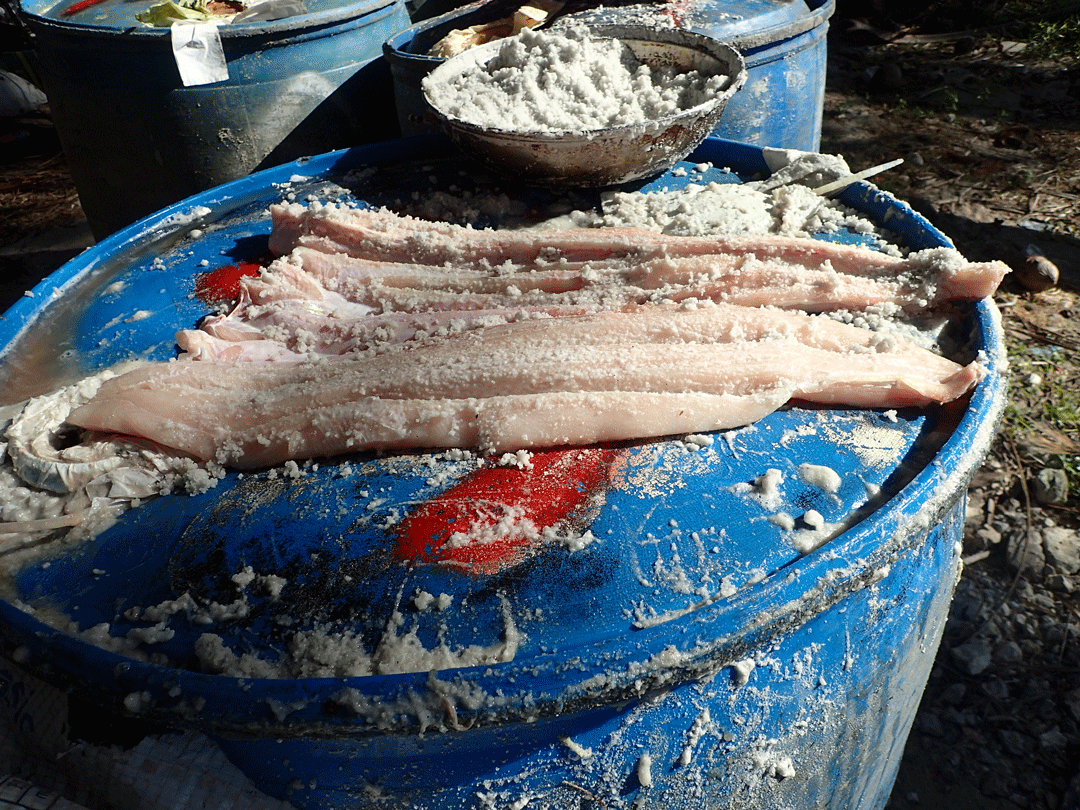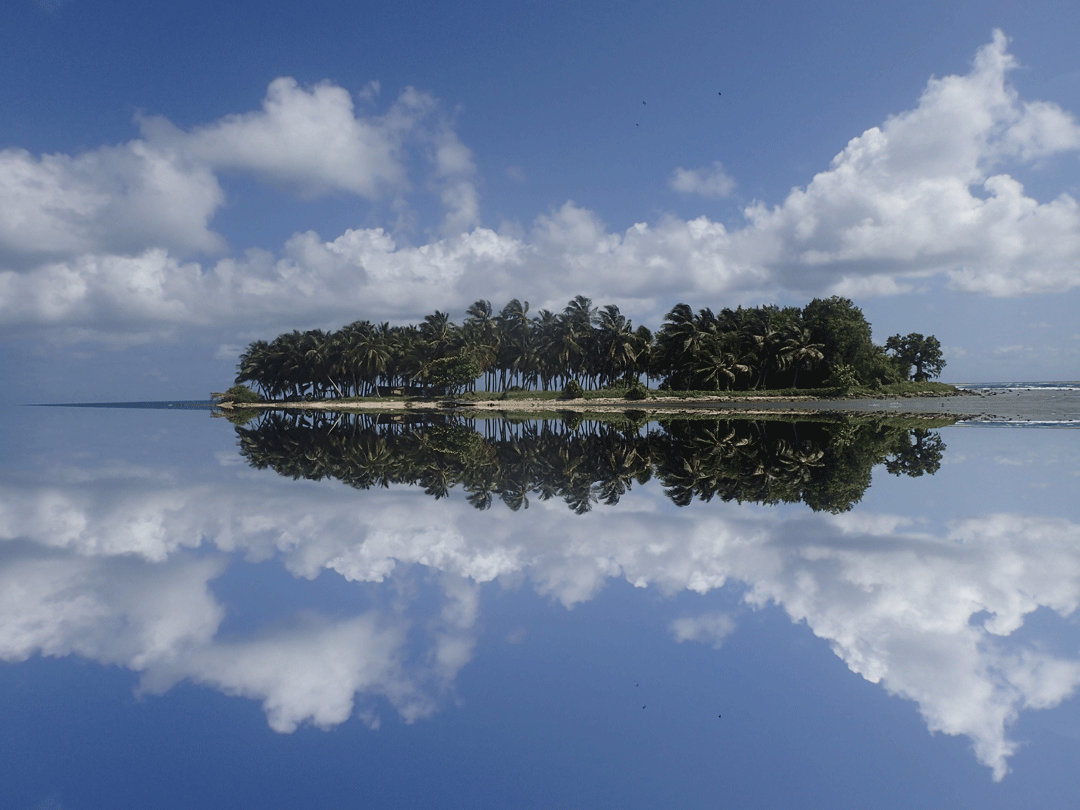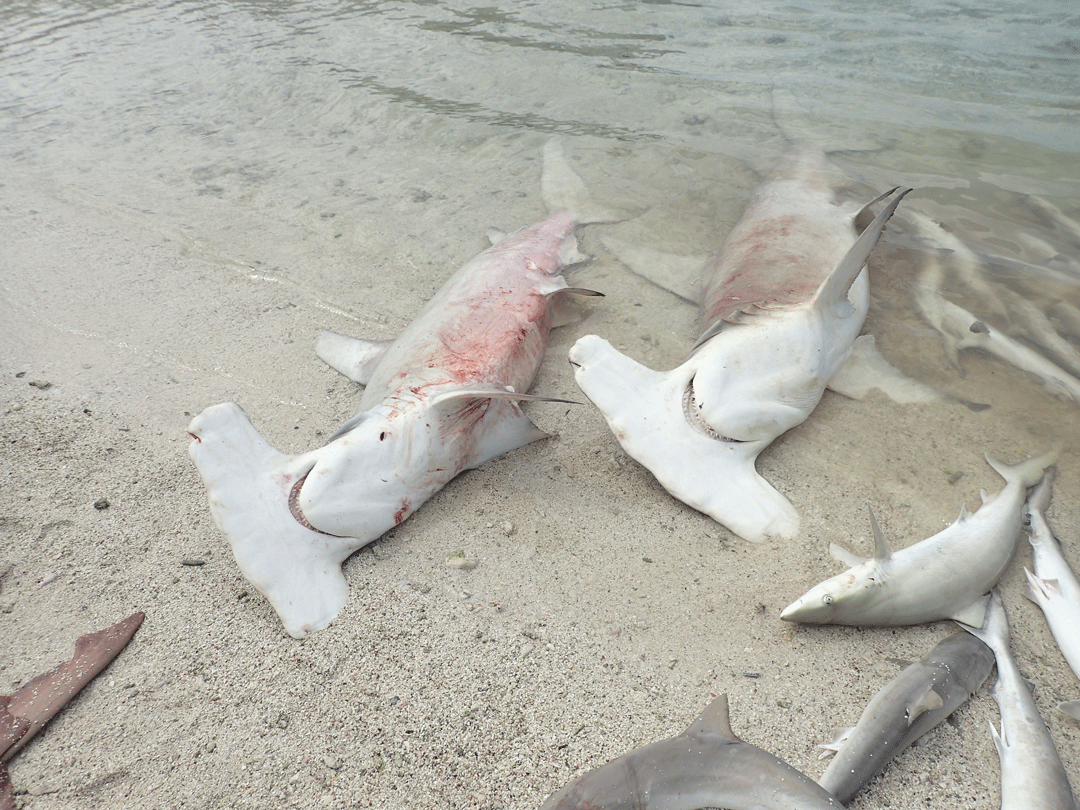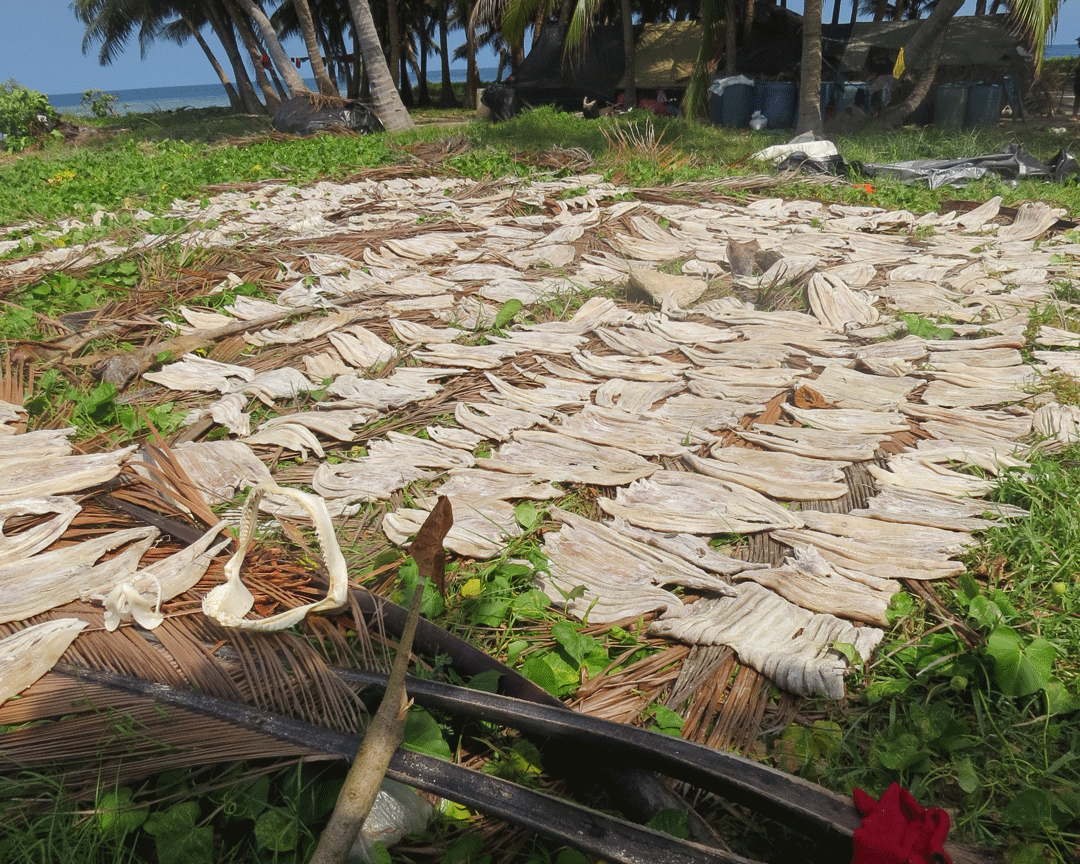Sharks and dry fish soup
In 2011 through a decree Honduras decided to become a shark sanctuary, banning shark fishing and commercialization of their meat derivatives in all the Exclusive Economic Zone. In 2016, there was a change in the Shark Sanctuary legislation, which allowed incidental captures of sharks to be commercialized. Unfortunately, the legislation was vague and incidental captures were not well defined which turned the amendment into a loophole, especially during the lent season festivities. During this time, Hondurans traditionally consume a dry fish soup made of a product known as “Cecina”, which is dried and salted shark or ray fillets. However, the people who buy this product are unaware it is shark or ray. We knew that shark fishing was in theory prohibited, but where was all this Cecina coming from?

Shark fillet salted and prepared to dry to make Cecina. Photo by Gabriela Ochoa | © MarAlliance
To answer this question, our team at MarAlliance reached out to the most knowledgeable people we could find; Artisanal Fishers. Our work took us to several fishing communities both in the mainland of Honduras and in the Bay Islands to assess whether artisanal fishers were indeed capturing sharks. Most fishers we would interview were not really capturing sharks, but many would often mention the Moskitia Region and specifically the Miskito Cays, because this was the area where according to them artisanal shark fishing was occurring and where most of the Cecina was sourced. The Moskitia region is by far the most remote and inaccessible area in the country, very few people were working there and none in the Miskito Cays. The idea of seeing these unexplored and remote cays firsthand and understanding what was happening there really intrigued me. In 2017, with the permission of the Miskito Territorial council and one brave fisherman, who decided to take a mostly all-women team despite the superstition of “bad luck”, we finally made it to the Miskito Cays!

Cocorocuma Cay or Katsikumi, the small Cay where we stayed with the artisanal fishers in the Miskito Cays. Photo by Gabriella Ochoa | © MarAlliance
We discovered a seasonal shark fishery, targeting great hammerheads and other large-bodied sharks to suffice the demand for the infamous Cecina. The fishers were mostly using gillnets and to a lower extent longlines. We also had the opportunity to see the human side of this fishery, hardworking Miskito fishers trying to make a living to support their families. They were kind and patient enough to let us collect data on most of the sharks landed and this marked the beginning of our project. After this initial trip we knew two things:
- We needed more information, and
- this was not our last trip to the Cays.
All that we knew from the Cays at this point was the data we had gotten from one boat, but there was no fisheries independent baseline information on this remote and important area.

Two great hammerhead sharks landed by one artisanal fishing boat in the Cocorocuma Cay, Miskito Cays. Photo by Gabriella Ochoa | © MarAlliance
Our project will try to answer some of these questions by going back to the source, the artisanal fishers. We hope to tap into their traditional ecological knowledge to be able to better understand the fishery and the motivations of the fishers themselves using surveys. In addition, we will capture, tag and release sharks to provide a fisheries-independent baseline for this area that can be compared with similar surveys throughout the region which will help us monitor changes in the abundance and diversity of the local shark species over time.

Shark fillets drying in the sun at the Miskito Cays, this is part of the process of making “Cecina”. Photo by Gabriella Ochoa | © MarAlliance
